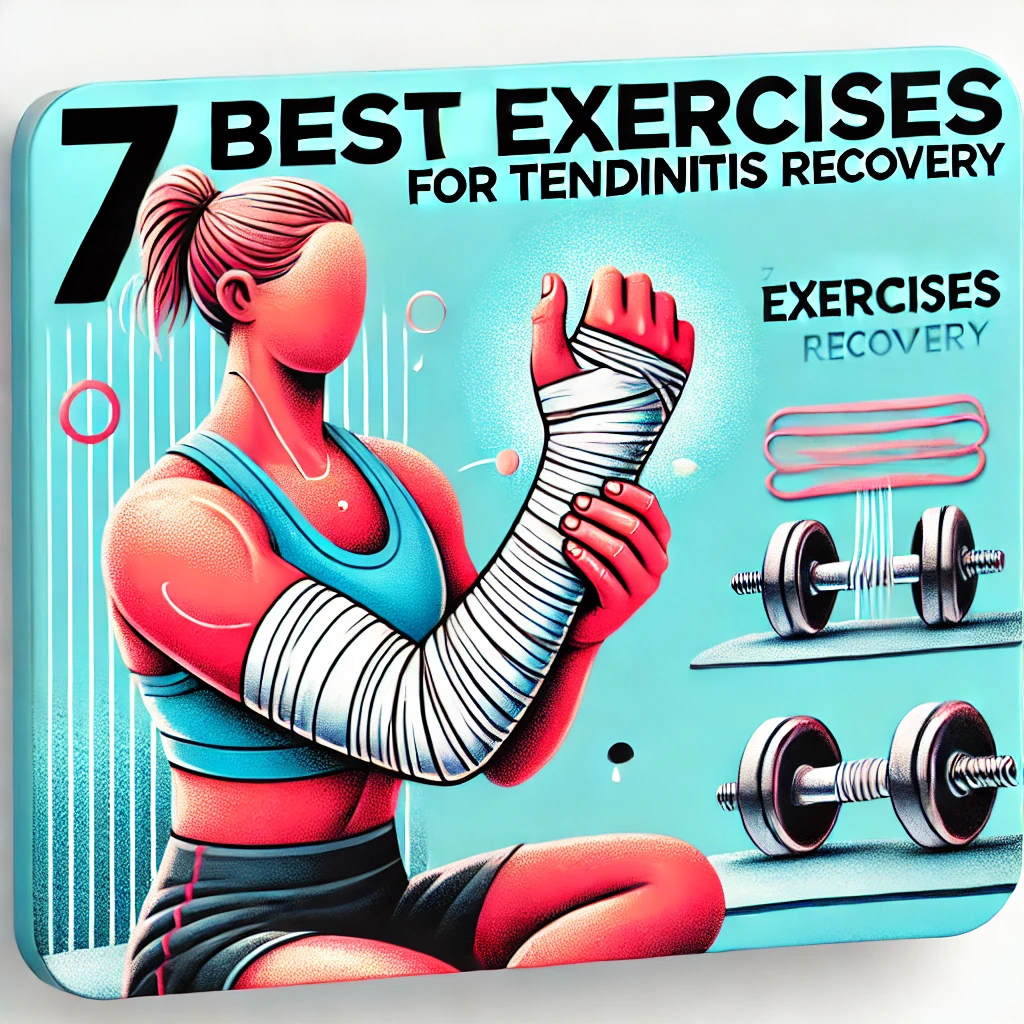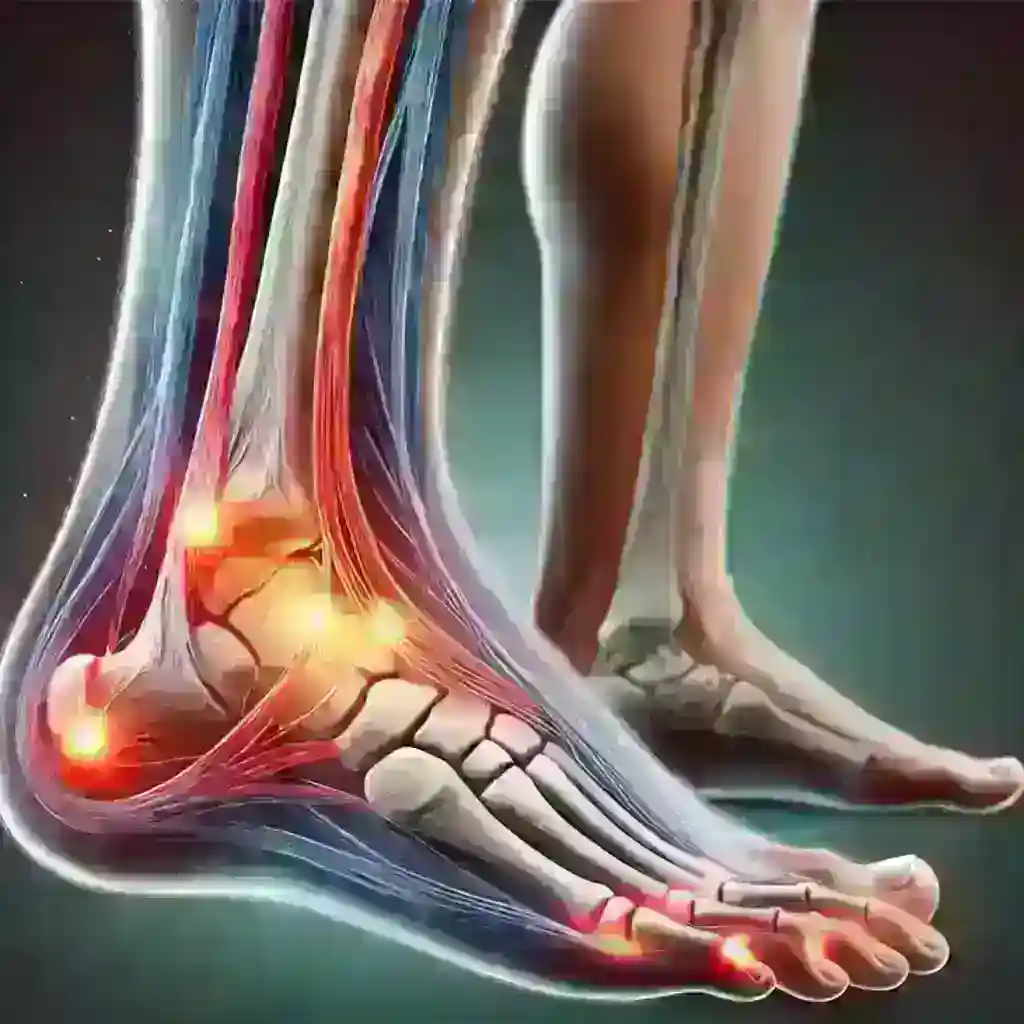
Tendinitis can be a real pain, quite literally! It’s an inflammation or irritation of a tendon, the thick fibrous cords that attach muscle to bone. This condition is commonly caused by repetitive motion or overuse, and it can make daily activities challenging. Symptoms often include pain, tenderness and mild swelling, which can significantly hinder movement and quality of life. Without proper care, tendinitis can become chronic and lead to further complications.
Fortunately, the right exercises can help you recover from tendinitis, strengthen the affected area, and prevent future flare-ups. Exercise plays a crucial role in restoring function, increasing flexibility and promoting healing by improving blood flow to the injured tendon. Whether you’re dealing with tendinitis in your shoulder, elbow, wrist, knee or ankle, tailored exercises can provide relief and expedite recovery.
In this article, we’ll explore the seven best exercises to aid in your recovery from tendinitis. These exercises are designed to be easy to perform at home or in the gym and can be adapted to suit various levels of fitness and stages of recovery. By incorporating these exercises into your routine, you can alleviate pain, restore mobility and strengthen the tendons to prevent future injuries.
Understanding Tendinitis
Definition and Common Causes
Tendinitis occurs when a tendon becomes inflamed, leading to pain and tenderness just outside a joint. Common causes include repetitive motion, sudden increases in activity level, poor posture, and aging. Athletes, manual laborers and individuals with certain medical conditions are particularly at risk.
Symptoms and Affected Areas
Symptoms of tendinitis typically include pain, tenderness and mild swelling near the affected joint. The most common areas affected by tendinitis are the shoulders, elbows, wrists, knees and heels.
Benefits of Exercise for Tendinitis
How Exercise Aids Recovery
Exercise plays a crucial role in the recovery from tendinitis. It helps to strengthen the muscles and tendons, improve flexibility and promote blood flow to the affected area. This can speed up healing and reduce the likelihood of recurrence.
Preventing Recurrence
Regular exercise not only aids in recovery but also helps prevent tendinitis from coming back. Strengthening and stretching the tendons and muscles ensures they can handle daily activities without becoming irritated or inflamed.
Precautions Before Starting Exercises
Consulting with a Healthcare Provider
Before starting any exercise program, it’s essential to consult with a healthcare provider, especially if you’re experiencing significant pain or swelling. They can provide personalized recommendations and ensure that exercises are safe for your specific condition.
Warm-Up and Cool-Down Importance
Warming up before exercising and cooling down afterward is vital. Warm-up exercises increase blood flow to the muscles and tendons, preparing them for more intense activity. Cooling down helps to gradually reduce the heart rate and stretch the muscles, aiding in recovery.
Exercise 1: Wrist Flexor Stretch
How to Perform the Wrist Flexor Stretch
- Extend your arm in front of you with your palm facing up.
- Use your other hand to gently pull your fingers back toward your body until you feel a stretch in your forearm.
- Hold for 15-30 seconds and repeat 2-3 times.
Benefits for Tendinitis
This stretch helps to improve flexibility and reduce tension in the wrist and forearm, which is particularly beneficial for tendinitis in the wrist or elbow.
Exercise 2: Wrist Extensor Stretch
How to Perform the Wrist Extensor Stretch
- Extend your arm in front of you with your palm facing down.
- Use your other hand to gently push your hand downward, stretching the top of your forearm.
- Hold for 15-30 seconds and repeat 2-3 times.
Benefits for Tendinitis
Stretching the wrist extensors can relieve pain and improve flexibility, making it easier to perform daily tasks without discomfort.
Exercise 3: Eccentric Wrist Flexion
How to Perform Eccentric Wrist Flexion
- Sit with your forearm supported on a table, holding a light dumbbell with your palm facing up.
- Slowly lower the weight by extending your wrist.
- Use your other hand to help lift the weight back up.
- Repeat for 10-15 repetitions.
Benefits for Tendinitis
Eccentric exercises, which focus on the lengthening phase of muscle contraction, are particularly effective for tendinitis as they help to strengthen the tendons and promote healing.
Exercise 4: Eccentric Wrist Extension
How to Perform Eccentric Wrist Extension
- Sit with your forearm supported on a table, holding a light dumbbell with your palm facing down.
- Slowly lower the weight by flexing your wrist.
- Use your other hand to help lift the weight back up.
- Repeat for 10-15 repetitions.
Benefits for Tendinitis
This exercise targets the wrist extensors, helping to strengthen them and reduce pain and inflammation in the forearm.
Exercise 5: Shoulder External Rotation
How to Perform Shoulder External Rotation
- Lie on your side with your elbow bent at a 90-degree angle and your upper arm resting on your side.
- Hold a light dumbbell and rotate your forearm upward, keeping your elbow against your side.
- Lower back down slowly and repeat for 10-15 repetitions.
Benefits for Tendinitis
Strengthening the shoulder’s external rotators can help stabilize the shoulder joint, reducing strain on the tendons and preventing tendinitis.
Exercise 6: Forearm Pronation and Supination
How to Perform Forearm Pronation and Supination
- Sit with your forearm supported on a table, holding a light dumbbell.
- Rotate your forearm so your palm faces down (pronation), then rotate back so your palm faces up (supination).
- Repeat for 10-15 repetitions.
Benefits for Tendinitis
This exercise helps to improve the flexibility and strength of the forearm muscles, reducing pain and improving function.
Exercise 7: Finger Extensions
How to Perform Finger Extensions
- Place a rubber band around your fingers and thumb.
- Spread your fingers apart against the resistance of the band.
- Repeat for 10-15 repetitions.
Benefits for Tendinitis
Strengthening the muscles in your fingers and hands can help alleviate pain and improve grip strength, which is beneficial for tendinitis in the hands and fingers.
Combining Exercises for Optimal Recovery
Creating a Balanced Routine
To achieve the best results, it’s essential to combine these exercises into a balanced routine. Aim to perform each exercise 2-3 times a week, allowing rest days in between to prevent overuse.
Frequency and Duration Recommendations
Start with a lower frequency and gradually increase as your strength and flexibility improve. Each exercise session should last about 20-30 minutes, including warm-up and cool-down periods.
Listening to Your Body
Recognizing Pain vs. Discomfort
It’s crucial to differentiate between pain and discomfort. Mild discomfort is normal during exercise, but sharp or severe pain indicates that you should stop and seek medical advice.
When to Rest and Seek Medical Advice
If you experience persistent pain or worsening symptoms, it’s essential to rest and consult a healthcare provider. They can provide additional guidance and adjust your exercise program if necessary.
Additional Tips for Tendinitis Recovery
Importance of Hydration and Nutrition
Staying hydrated and maintaining a balanced diet rich in anti-inflammatory foods can support your recovery. Omega-3 fatty acids, found in fish and flaxseeds and antioxidants, found in fruits and vegetables, can help reduce inflammation.
Incorporating Rest and Recovery Days
Allowing your body time to rest and recover is vital. Incorporate rest days into your exercise routine and avoid overexertion to prevent further injury.
Conclusion
Recovering from tendinitis requires patience and consistency. By incorporating these exercises into your routine, you can strengthen your tendons, reduce pain and improve your overall joint health. Remember to listen to your body, consult with healthcare professionals, and make lifestyle changes that support your recovery. With dedication and the right approach, you’ll be back to your normal activities in no time.
FAQs
What are the best exercises for wrist tendinitis?
The best exercises include wrist flexor and extensor stretches, eccentric wrist flexion and extension and forearm pronation and supination.
How often should I do these exercises for tendinitis?
Aim to perform these exercises 2-3 times a week, allowing rest days in between to prevent overuse.
Can these exercises completely cure tendinitis?
While these exercises can significantly aid recovery and prevent recurrence, it’s essential to follow a comprehensive treatment plan that may include rest, medication and other therapies.
When should I seek medical advice for tendinitis?
If you experience persistent pain, worsening symptoms, or are unsure about starting an exercise program, consult with a healthcare provider for personalized advice.
What lifestyle changes can support recovery from tendinitis?
Staying hydrated, maintaining a balanced diet, incorporating rest days and avoiding overexertion can all support your recovery from tendinitis.


